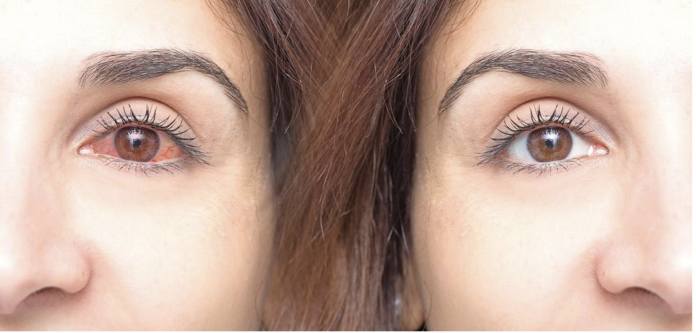What can your eyes reveal about your health?
- May 12, 2022
- 0
Scientists at the University of California at San Diego have developed a smartphone app that can detect early signs of Alzheimer’s disease and other neurological conditions. The app
Scientists at the University of California at San Diego have developed a smartphone app that can detect early signs of Alzheimer’s disease and other neurological conditions. The app

Scientists at the University of California at San Diego have developed a smartphone app that can detect early signs of Alzheimer’s disease and other neurological conditions. The app uses a mobile phone’s near infrared camera to monitor changes in the size of a person’s pupils at a sub-millimetre level. These readings can be used to assess that person’s cognitive status.
As technology advances, eyes can become increasingly useful in diagnosing all kinds of diseases and conditions because they are transparent, requiring much less invasive examination methods than other parts of the body. But even without technology possible to detect a number of problems health just by looking into your eyes. These are some of the warning signs.
The pupil responds instantly to light, shrinking in bright environments and enlarging in dim conditions.
Pupil-sized slow or delayed responses, as well as a variety of diseases that can include serious conditions such as Alzheimer’s disease drug effects and evidence of drug use.
Dilated pupils are common in those who use stimulant drugs such as cocaine and amphetamines. Very small pupils can be seen in heroin users.
A change in the color of the sclera (“whites of the eyes”) may indicate that something is not right.
A red, bloodshot eye can be caused by excessive alcohol or drug use. It can also be caused by irritation or infection which in most cases pass within a few days. If the discoloration is persistent, it may indicate a more serious infection. inflammation or reaction to contact lenses or their solutions. In extreme cases, a red eye can indicate glaucoma, a disease that can lead to blindness. When the sclera turns yellow, this is usually a very clear sign. jaundice and a diseased liver.
The underlying causes of jaundice are very diverse. It includes inflammation of the liver (hepatitis), genetic or autoimmune diseases, and certain medications, viruses, or tumors.
A blood-red spot on the white of the eye (subconjunctival hemorrhage) can look frightening and is always the result of a small, localized blood vessel bursting.
Often there is no known cause and disappears in a few days.
However, it can also be an indicator high blood pressure, diabetes, and blood clotting disorders causes excessive bleeding.
Blood-thinning medications such as aspirin can also be the cause, and if the problem is frequent, your doctor may recommend that you review your dose.
The white or gray ring around the cornea is often associated with: high cholesterol and increased risk of heart disease.
It can also reveal alcoholism and sometimes wet eyes, hence the medical name given to it arcus senilis
Sometimes the most worrying features that can appear in the eyes are actually the most It is benign and easy to treat.
Pinguecula is a yellowish oily bump that can be seen on the white of the eye. Small fat and protein storage It can be easily removed with eye drops or removed with a simple operation. A pterygium (pronounced te-ri-gión) is a pink growth on the white of the eye. It does not pose a vision hazard until the cornea (the colored part of the eye) begins to grow. Fortunately, the pterygium grows very slowly and, as with the pinguecula, cann remove it easily. In fact, they must be removed long before they reach the cornea.
If allowed to continue to grow, the pterygium can form an opaque “film” on the cornea that will obstruct vision.
It is believed to be one of the main causative factors of both pinguecula and pterygium. chronic exposure to ultraviolet light your sun.
Confused eyes can be part of a normal facial feature.
But when eyes that weren’t puffy before start to come forward, the most obvious reason may be a problem in the abdomen. thyroid gland Y needs medical attention.
A single protruding eye can be caused by an injury, infection, or more rarely, a tumor at the back of the eye.
Eyelids can also indicate many diseases. These are mainly related minor effects of the glands of the eyelids.
a common condition stye or, which appears as a red bump on the upper and less commonly the lower eyelid and clogged sebaceous gland.
Styes usually go away on their own or with warm compresses. If it persists, it should be removed with a simple operation. A eyelid twitching (ocular myochemistry) can be caused by irritation or even hot flashes and often feels much worse than it looks.
In most cases, it is completely harmless and may be related to: stress, nutrient imbalance, or excessive caffeine intake.
This article is a guide only. If you have doubts about your health, consult a specialist.
Source: El Nacional
Alice Smith is a seasoned journalist and writer for Div Bracket. She has a keen sense of what’s important and is always on top of the latest trends. Alice provides in-depth coverage of the most talked-about news stories, delivering insightful and thought-provoking articles that keep her readers informed and engaged.